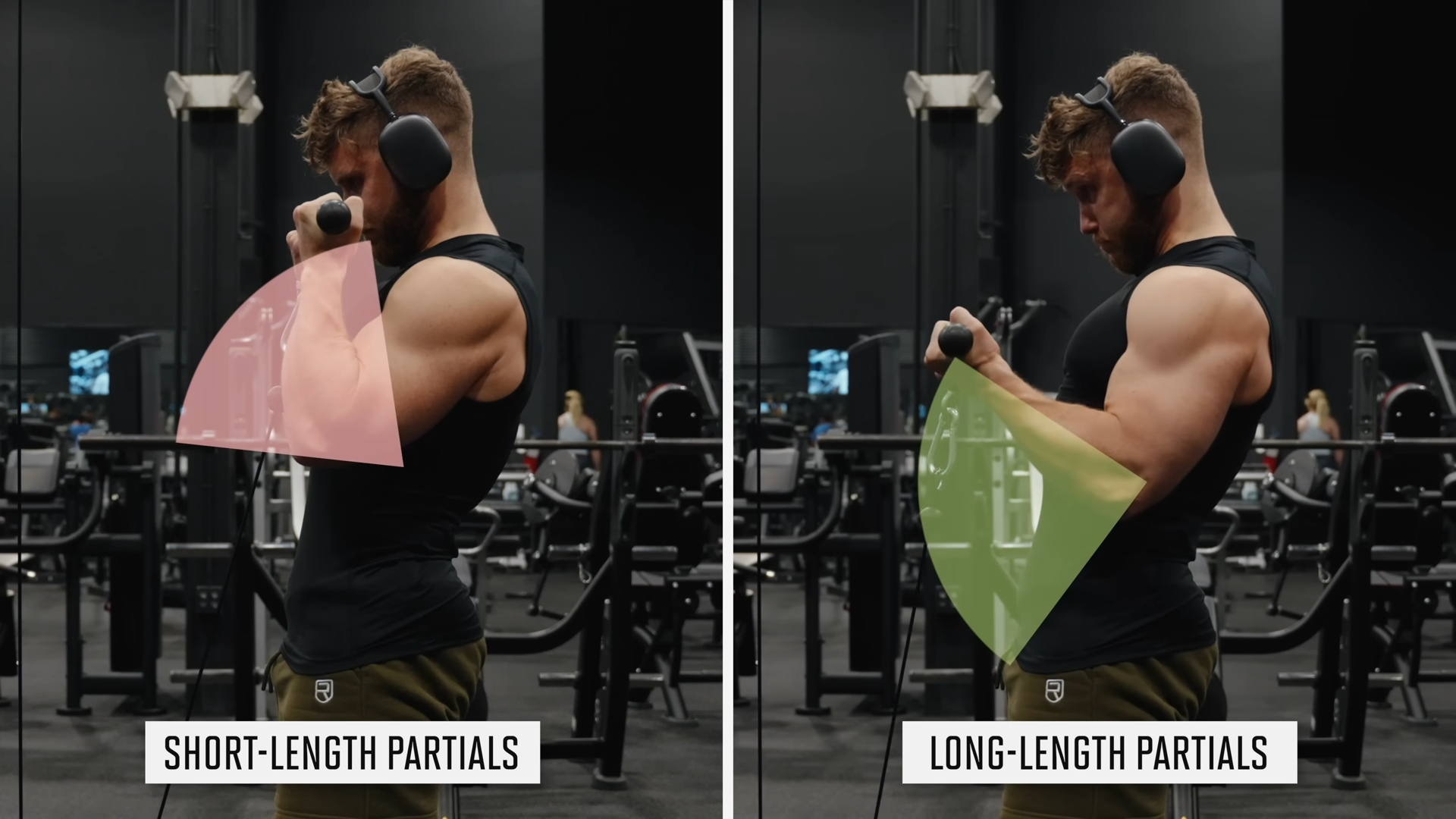The longer you train, the harder it becomes to build muscle mass. Many then look for alternative training methods to maximize muscle growth. One such method that has been getting a lot of attention lately is lengthened partials. What exactly are they and can they really help you achieve more muscle growth?
WHAT ARE LENGTHENED PARTIALS?
Lengthened partials are a training technique where lifters perform partial repetitions. The focus is on the portion of the range of motion where the muscle is stretched, such as from the bottom to the middle of a leg press or bicep curl. This is in contrast to regular repetitions, where a full range of motion (full ROM) is recommended for maximum muscle growth.
Not sure what the most extended position of an exercise is? Then divide the exercise into a lifting phase and a lowering phase. With lifting, the weight naturally goes up, with lowering, it goes down. The rule of thumb: the first half of the lifting phase, also known as the concentric phase, is the extended half of the repetition. So if you only do the first half of the lifting phase, you are doing partial repetitions in an extended position.
You could also call lengthened partials stretched partials. When you feel a deep stretch in your muscles, it is being stretched. That is the point where you do the lengthened partial.
See below the difference between short-length and long-length partials in the biceps curl. Long-length partials are the lengthened partials.
The idea behind lengthened partials is to remove the less stimulating part of the range of motion. What remains is the most stimulating part, which is why we also speak of stretch-mediated hypertrophy.
Still not sure what lengthened partials are? See coach Jeff Nippard’s examples .
ADVANTAGES
Lengthened partials have become increasingly popular in recent times. Coach and scientist Milo Wolf was one of the first to highlight the benefits of lengthened partials. He suggests that lifters can achieve approximately 5% more growth with lengthened partials compared to full ROM.
Wolf bases this on what science says about this. There are currently five relevant studies (1, 2, 3, 4, 5). In four of these five studies, more muscle growth was found with lengthened partials compared to full ROM. One study found no difference.
Another potential benefit of lengthened partials is that you can use them to train past muscle failure relatively safely. This is because muscles are stronger eccentrically and can still produce some force even if you are too exhausted to do the entire concentric portion of a lift.
Wolf is so enthusiastic about lengthened partials that he almost exclusively does them now.
WHAT TO DO?
And now? Only doing lengthened partials? Not really. As we saw, there is indeed some scientific evidence in favor of lengthened partials, but it is too early to say without further ado that they are better than full ROM. Let’s face it, full ROM has been shown to be very effective for those who are striving for muscle growth for years.
Coach Jeff Nippard is also a fan of lengthened partials, but only uses them on the last set of some exercises and sometimes as a training technique to go past failure. This is only for isolation exercises and some machine exercises, though; avoid them for exercises where it’s unsafe to push yourself to the limit, like barbell squats and bench presses, Nippard says.
Wolf advises lifters who are looking for maximum muscle growth to spend at least 50% of their training on lengthened partials. This is true for more advanced bodybuilders. Beginners are advised to train with full ROM first and master the entire range of motion. In addition, beginners do not need any special training techniques, because they can grow like crazy with regular training.
Our advice for more advanced users? Take full ROM as a starting point and gradually add lengthened partials. On the one hand, you do some ‘normal’ sets, on the other hand, you do some sets as training beyond muscle failure. Keep in mind that lengthened partials in the latter case involve extra training volume, so make sure you have a favorable stimulus-to-fatigue ratio, for example by doing fewer sets on other muscle groups.
PROGRESSIVE OVERLOAD
Note: lengthened partials require progressive overload just as much as full ROM training. This means that you use the same ranges of motion every workout and try to progress gradually.
CONCLUSION
Lengthened partials are a promising training technique for those looking to maximize muscle growth. They can be especially useful for more advanced bodybuilders who are hitting a muscle growth plateau.
The data is still quite limited. Therefore, take full ROM as a starting point and slowly but surely add more and more partial repetitions and use them here and there to train past muscle failure.
Maintain a consistent execution of the exercise to be able to apply progressive overload.
